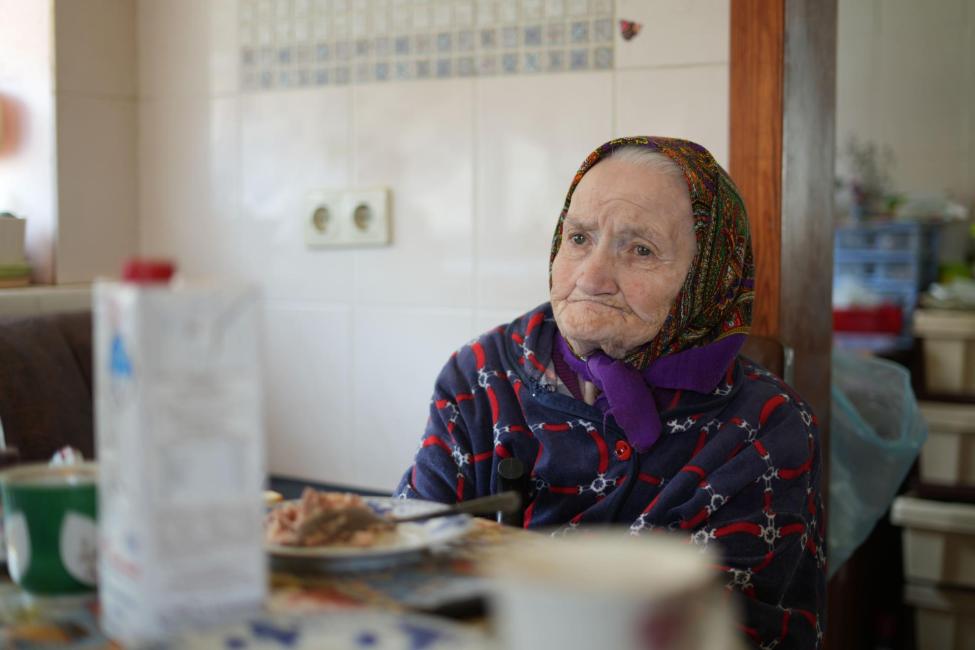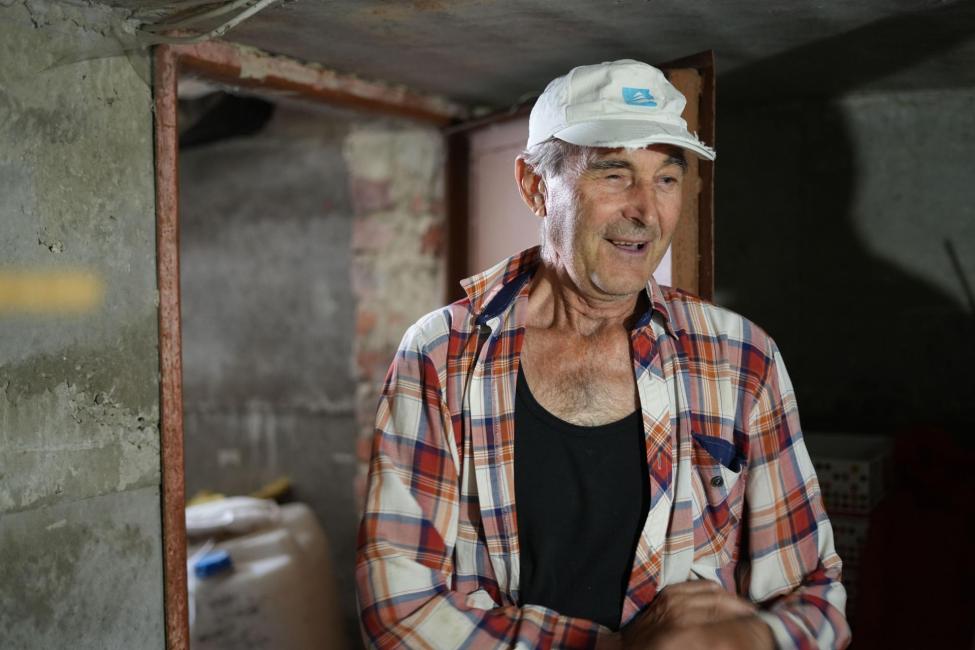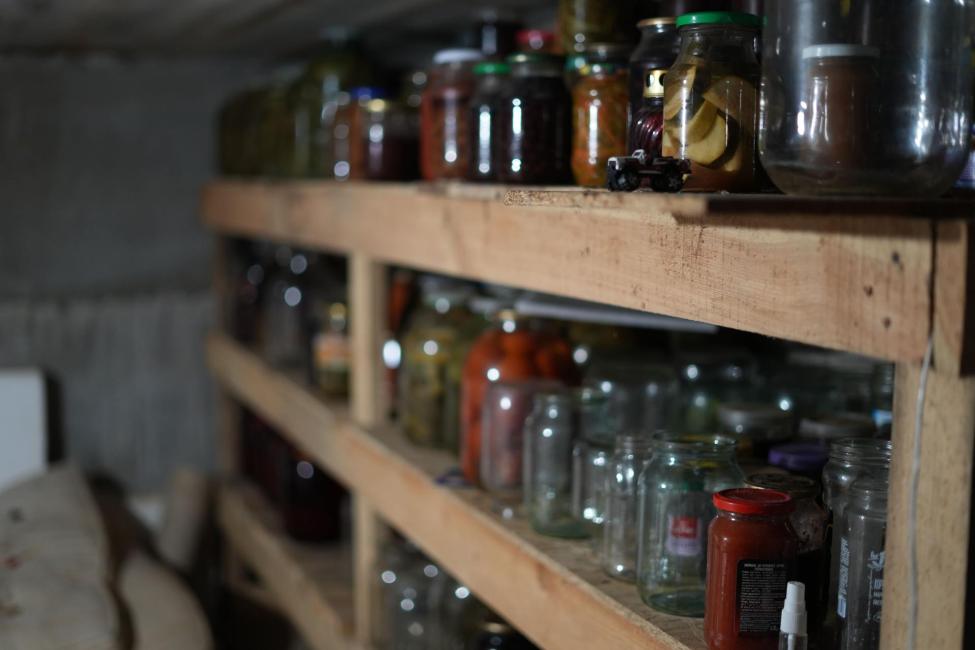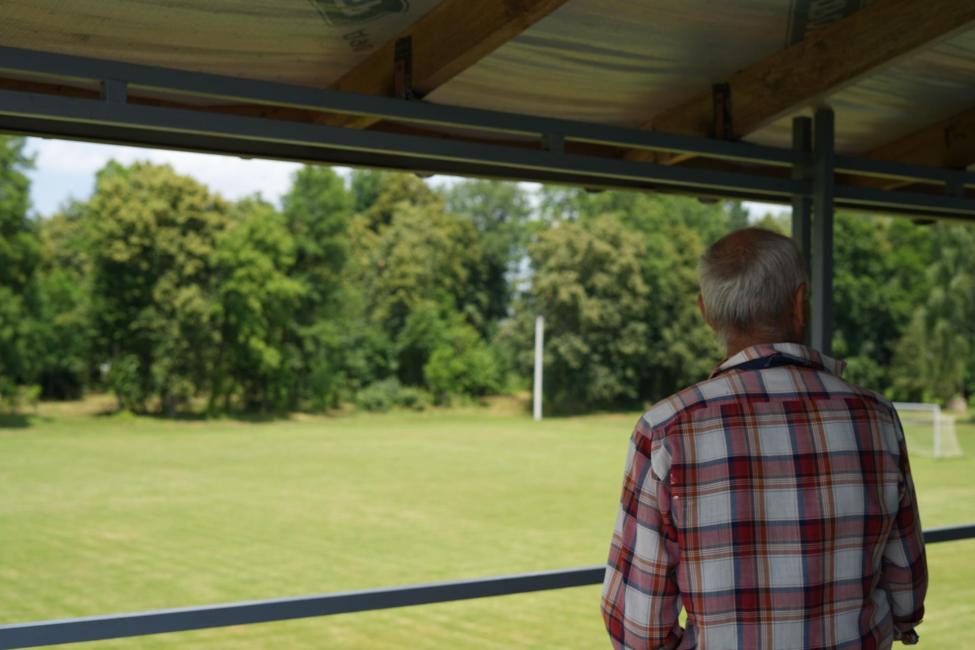-
Who We Are
WHO WE AREThe International Organization for Migration (IOM) is part of the United Nations System as the leading inter-governmental organization promoting humane and orderly migration for the benefit of all. IOM has had a presence in Ukraine since 1996.
About
About
IOM Global
IOM Global
-
Our Work
Our WorkAs the leading inter-governmental organization promoting humane and orderly migration, IOM plays a key role to support the achievement of the 2030 Agenda through different areas of intervention that connect both humanitarian assistance and sustainable development. In Ukraine, IOM supports migrants through a variety of resettlement, support and protection activities.
- Data and Resources
- Take Action
- 2030 Agenda
Kopyliv, Kyiv region – Nina and her husband Volodymyr are more likely to be found in their garden than inside their home. Located in a village less than an hour from Kyiv, their small brick house is surrounded by long rows of crops, creating a rich aroma of dill and blossoming trees that spread for half a hectare. Potatoes, onions, cabbages, beetroots, tomatoes and more thrive in their beautiful garden.
The love for their land runs deep in Nina’s family. “As children, our mother taught us to love our land when we would help her in the garden,” says 67-year-old Nina standing between rows of potato sprouts. In Kopyliv, villagers work hard each spring and summer to prepare food stocks for the looming cold season. Soon, Nina will fill the shelves in her cellar with jars of canned vegetables and jams.
Last year, when the Russian invasion began, 11 relatives and friends relied on Nina’s crop to survive while hiding in the cellar for several weeks. Among them – Nina’s 90-year-old mother, Raisa, who faced the war in the same place for the second time. The Nazi occupation of Kopyliv during the Second World War was Raisa’s most striking childhood memory.
Nina was the first person for several generations of her family to move from the village to the city. For 38 years, she worked at a confectionary in Kyiv, occasionally visiting the village to assist her parents. She met her future husband Volodymyr in Kyiv and raised their children there too. However, after retiring, Nina and Volodymyr decided to return to the village, feeling a strong connection to the land that had been cared for by their ancestors.
“My grandparents had been working in this garden, then my parents, and then my husband and I. At a certain age, the earth is calling you back. That is why many people are returning to the villages.”
During the worse of the fighting in Kyiv region in March last year, the family moved to Ternopil in Western Ukraine. When they returned to Kopyliv a month later, they found broken windows and deep cracks in their house. But the land was still there, and the sowing season was about to start.
Their garden was now safe to grow plants again. However, in many villages where battles took place, the earth is still fraught with mortal danger – mines, unexploded bombs, shells and other deadly by-products of the war. According to recent data from UNDP, Ukraine is now one of the world’s most heavily mine-contaminated countries in the world, and it will take decades to make agricultural lands safe again. As a result, many agricultural businesses experienced loss in revenue, and many landowners reported that their lands were contaminated with mines.
This summer, the International Organization for Migration (IOM) and its partner, the Ukrainian Red Cross, handed over agricultural equipment and complementary cash assistance to 713 families who rely on private gardens to feed themselves. Funding from the U.S. Department of State’s Bureau of Population, Refugees, and Migration has ensured food security in seven rural communities in seven regions.
“We got a motoblock [two-wheel tractor], so that we would not have to work the land manually with a shovel,” explains Nina who also plans to sell any surplus crop at the local market. “I am never going to leave my land again. How can one leave the land and make it suffer? While we can take care of it, we will.”
Nina’s husband Volodymyr who is also involved with the garden is finding ways to support the whole community as well. With his adult son, he has been restoring the formerly abandoned stadium where the local children’s football team can now train thanks to his work. Among the players is his 8-year-old grandson. The couple are teaching their four grandchildren to respect their land and work hard.
“Our garden is beautiful, but you don’t just work, you work a lot,” says Raisa, echoing the age-old wisdom shared by many Ukrainian villagers.
Nina and Volodymyr's story stands as a testament to the enduring connection between rural communities and their land. Through hard work and determination, the couple have not only sustained themselves but also contributed to the sense of unity in the village. As they continue to pass on their knowledge and values to the younger generations, the future of Kopyliv community is hopeful. This dedication to nurturing the land and festering a sense of community empowers IOM's commitment to support rural communities like Kopyliv and pave the way for their sustainable livelihoods.
This story was written by Alisa Kyrpychova from IOM Ukraine.





